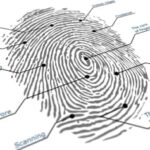
TECH5‘s T5-AirSnap Finger solution has achieved a significant milestone by successfully passing iBeta’s Presentation Attack Detection (PAD) Level 1 evaluation program. This accomplishment affirms the solution’s compliance with the ISO 30107-3 standard, a globally recognized benchmark for biometric security. The software demonstrated robust capabilities in fending off all spoofing attacks while avoiding false positives during iBeta’s rigorous testing regime.
According to TECH5’s official announcement, the T5-AirSnap Finger showcased outstanding performance with a 0% APCER (Attack Presentation Classification Error Rate) and a 0% BPCER (Bona Fide Presentation Classification Error Rate). These metrics indicate that the software neither misidentified spoofs as live fingerprints nor incorrectly classified live fingers as spoofs. Rahul Parthe, Co-Founder, Chairman, and CTO of TECH5, stated that this perfect score is “one more proof of our technology’s excellence.”
iBeta is accredited by the National Institute of Standards and Technology (NIST) NVLAP as an Independent Test Lab. The tests were conducted in accordance with the ISO/IEC 30107-3 standard and the ISO/IEC 30107-1 framework, ensuring that T5-AirSnap Finger met the highest industry standards for biometric security.
The T5-AirSnap Finger technology is designed to capture fingerprints within seconds using a standard smartphone camera. This feature unlocks biometric capture and verification capabilities for a wide range of use cases, from digital onboarding to transactions requiring high-level assurance. The technology also includes inbuilt liveness detection, which recently ranked first in the Liveness Detection (LivDet) 2023 Non-contact Fingerprint international competition.
TECH5 recently received a US patent for the neural network-based biometric scanning and liveness technology used in its T5-AirSnap Finger solution. The patent details a system that produces a 3D depth map of a finger, enabling 500 dpi resolution. Neural network models are trained to detect various metrics, such as the size and direction of fingers, and then generate fixed-length fingerprint templates for subsequent matching.
–
September 21, 2023 – by the FindBiometrics Editorial Team






Follow Us